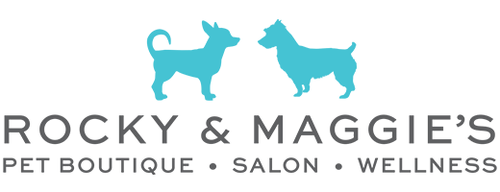What are the options for feeding your pet?
When it comes to feeding your beloved pet, there are several options to consider. The most common choices are wet food, dry kibble, and raw diet. Each option has its own benefits and considerations, so it's important to make an informed decision based on your pet's specific needs.
Wet Food: A Nutritious and Palatable Option
Wet food, also known as canned food, is a popular choice among pet owners. It typically contains a higher moisture content, which can be beneficial for pets who don't drink enough water. Additionally, wet food is often more palatable, making it a great option for picky eaters or pets with dental issues.
Many reputable pet food brands offer a wide variety of wet food options, catering to different dietary needs and preferences. It's important to choose a high-quality brand that uses real meat and avoids artificial additives. See our Wet Dog Food options.
Dry Kibble: Convenient and Beneficial for Dental Health
Dry kibble, also known as dry food or kibble, is another popular choice for pet owners. It offers convenience, as it can be easily stored and served. Dry kibble also promotes dental health by helping to remove plaque and tartar buildup as pets chew on the crunchy texture.
When selecting dry kibble, it's crucial to choose a brand that provides complete and balanced nutrition for your pet. Look for options that contain high-quality protein sources, essential vitamins and minerals, and minimal fillers or artificial ingredients. See our Dry Kibble and Dry Dog Food options.
Raw Diet: A Natural and Species-Appropriate Option
Raw diet, also known as a raw food diet or BARF (Biologically Appropriate Raw Food), is a controversial but increasingly popular option among pet owners. This diet consists of feeding pets raw meat, bones, fruits, and vegetables, mimicking their ancestral diet in the wild.
Advocates of raw diets claim that it can improve digestion, promote healthier skin and coat, and increase energy levels in pets. However, it's important to note that raw diets require careful planning and preparation to ensure proper nutrition and avoid potential health risks.
There are two main types of raw diets: frozen and dehydrated. Frozen raw diets are typically stored in the freezer and thawed before serving, while dehydrated raw diets are made by removing moisture from raw ingredients. Both options have their own advantages and considerations, so it's essential to consult with a veterinarian before making the switch. See our Frozen and Dehydrated Dog Food options.
Consulting with a Veterinarian
When making the decision about what to feed your pet, it's always recommended to consult with a veterinarian. They can provide valuable insights based on your pet's specific needs, health conditions, and dietary requirements.
Additionally, it's important to reference reliable sources when researching pet food options. Look for information from reputable veterinary organizations or trusted experts in the field of veterinary medicine.
Conclusion
Choosing the right food for your pet is a crucial decision that can impact their overall health and well-being. Whether you opt for wet food, dry kibble, or a raw diet, it's important to consider your pet's individual needs and consult with a veterinarian. Remember to choose high-quality brands, reference reliable sources, and prioritize your pet's health above all else.

